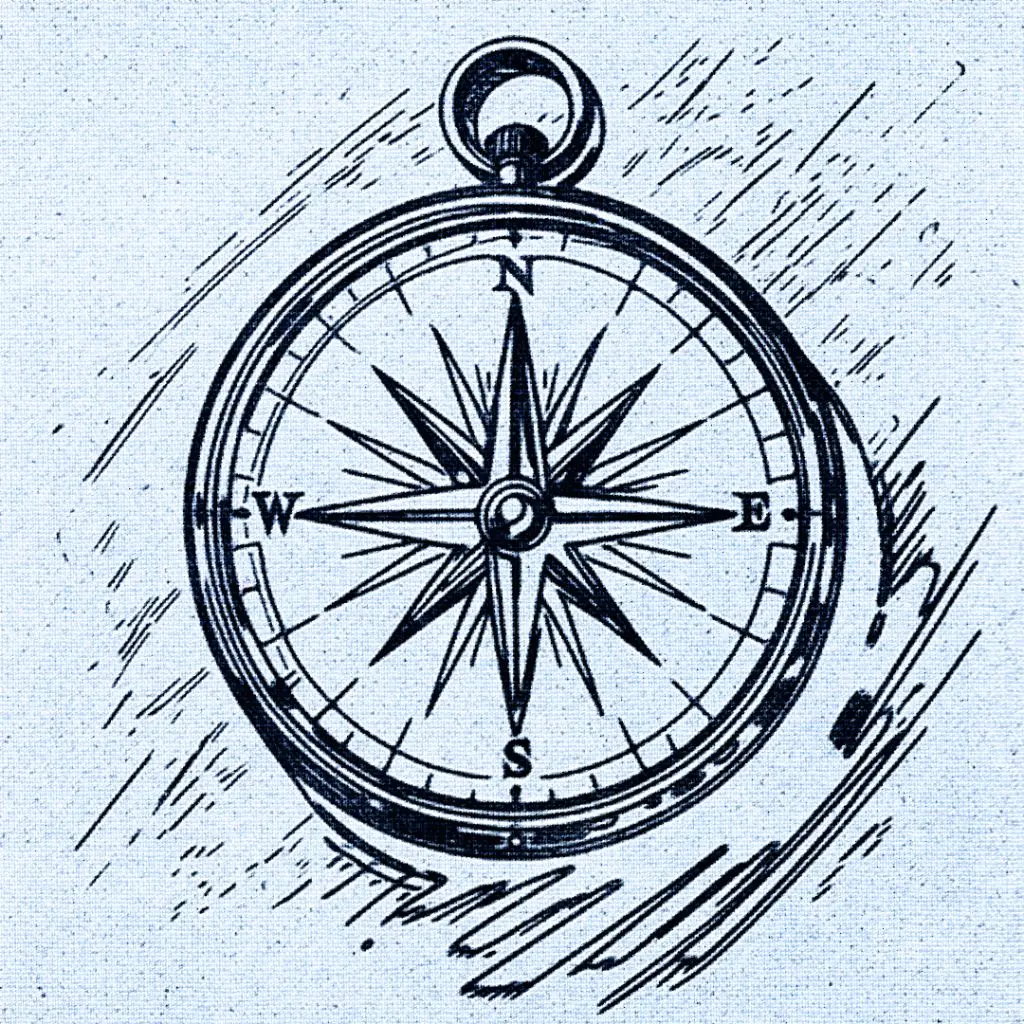What Is a Brand Strategy?
Imagine you’re embarking on a thrilling trek through uncharted wilderness. A brand strategy is your map—a clear plan that guides your path to stand out and succeed in a crowded market.
At its core, a brand strategy is a long-term blueprint for defining how your brand stands out and connects with your audience.
A solid brand strategy encompasses your brand’s voice, visual identity, storytelling, and values. It ensures that every touchpoint—from your logo to your customer service—delivers a consistent and memorable experience.
When done right, a brand strategy fosters trust, loyalty, and growth, making your business an enduring landmark in your industry.
The Importance of Strategic Branding

Strategic branding is more than just aesthetics—like logos and color schemes; it’s the compass guiding your business’s journey.
Here’s why it matters:
- Differentiation: Stand out in a crowded market by highlighting what makes your brand unique.
- Trust and Loyalty: Build a strong relationship with customers, encouraging repeat business and organic growth.
- Value Communication: Convey your brand’s worth effectively, which can improve pricing strategies.
Efficiency: Streamline marketing efforts, enabling scalability and adaptability.
The Elements of a Brand Strategy

Every successful adventure requires the right tools.
These elements form the foundation of an effective brand strategy:
Purpose
Why does your brand exist? Your purpose isn’t just about making profits; it’s about solving problems and creating value for your audience.
Brand Values
What principles guide your brand’s decisions and actions? Your values should align with your audience’s priorities, resonating deeply and authentically.
Voice and Tone
Think of your brand’s voice as its personality and tone as its mood. Together, they create a consistent and relatable way to communicate with your audience.
Design and Visual Identity
Your logo, color palette, typography, and imagery should paint a cohesive picture of your brand. Like a well-worn trail, these elements make your brand instantly recognizable.
Brand Story
Stories are the lifeblood of human connection. Craft a narrative that emotionally engages your audience, setting your brand apart from competitors. This is where the StoryBrand framework can help shape a story around your products or services to connect with your audience:
The StoryBrand Framework
The framework is modeled after the structure of a story and includes seven elements:
- A Character (The Hero): The customer is the hero of the story. Clearly identify who they are and what they want.
- Has a Problem: Heroes face challenges. Highlight the external, internal, and philosophical problems your product or service solves.
- And Meets a Guide: Your business is the guide. Establish authority and empathy to build trust with your audience.
- Who Gives Them a Plan: Provide a clear, step-by-step plan for how customers can engage with your product or service to solve their problems.
- And Calls Them to Action: Prompt customers to take action with direct calls to action (e.g., “Buy Now”) and transitional calls to action (e.g., “Learn More”).
- That Helps Them Avoid Failure: Outline the stakes—what the customer risks losing if they don’t take action.
- And Ends in Success: Paint a picture of the positive outcomes customers will experience when they work with your business.
How to Build a Brand Strategy

Embarking on the journey to craft a brand strategy requires actionable steps:
1. Identify Your Target Audience
Conduct thorough market research to uncover your audience’s needs, pain points, and motivations. This insight is your compass.
2. Establish a Unique Position in the Market
Define a positioning statement that clearly communicates what makes your brand distinctive.
3. Craft a Compelling Message
Align your messaging with your brand’s values and purpose to foster emotional connections with your audience.
4. Develop an Engaging Visual Identity
Design cohesive and meaningful visuals that reflect your brand’s mission and resonate with your audience.
5. Use Technology to Reach Your Audience
Leverage tools like social media, SEO, and analytics to engage with your audience and enhance visibility.
6. Analyze and Refine Your Strategy Regularly
Monitor performance using tools like Google Analytics, social media insights, and customer feedback surveys. Gather insights, identify trends, and adjust your strategy to stay aligned with audience needs and market trends.
Foundations of Our Brand Strategy in Marketing

Our brand strategy foundations are built on empathy and connection, inspired by three key philosophies that prioritize understanding and storytelling.
We chose Bernadette Jiwa’s “Marketing Is a Love Story” for its focus on emotional resonance, Donald Miller’s “StoryBrand Framework” for its clarity in positioning the customer as the hero, and Gary Vaynerchuk’s “Jab, Jab, Right Hook” for its strategic approach to delivering value.
These frameworks embody our belief in empathy-driven marketing—a philosophy that helps us craft narratives that truly connect with audiences.
Marketing Is a Love Story
Like any great love story, marketing starts with empathy. Bernadette Jiwa’s philosophy emphasizes authentic storytelling that resonates emotionally, creating loyalty and trust.
The StoryBrand Framework
Donald Miller’s framework positions the customer as the hero of their journey, with your brand serving as the guide. Clarify your message and focus on solving problems to build meaningful connections.
Jab, Jab, Right Hook
Gary Vaynerchuk’s approach underscores the importance of giving value before asking for anything in return. This means providing your audience with useful, engaging, or entertaining content—such as tips, stories, or resources—that builds trust and goodwill without immediately pushing for a sale. Build trust with your audience through storytelling tailored to each platform.
Ready to Create Standout Content?
At EV Agency, we believe every brand has a unique story waiting to be told. Let’s chart your course to success—one bold step at a time. Adventure awaits!
About Brand Strategy
Branding is the process of crafting a unique and memorable identity for a company that resonates with its audience and differentiates it from competitors. It encompasses a business’s visual elements—like logos, colors, and typography—combined with intangible components such as voice, tone, and values to shape how customers perceive and connect with the brand. At its core, branding is about creating an emotional and experiential relationship between a company and its audience, making the brand more than just a product or service.
An effective branding strategy communicates the company’s mission and value proposition while fostering trust, loyalty, and recognition. It influences purchasing decisions by shaping customer perceptions, creating an identity beyond the product, and making the business memorable across platforms. Strong branding supports marketing and advertising, enhances employee pride, and builds a lasting connection with customers.
For instance, iconic brands like Coca-Cola and Patagonia have established recognizable identities through consistent storytelling, values alignment, and visual appeal. Coca-Cola’s red and white design evokes feelings of comfort and nostalgia, while Patagonia’s mission-driven approach reinforces its environmental values.
Branding goes beyond individual elements—it is a continuous, evolving process that requires alignment with the company’s goals, target audience, and competitive landscape. A clear, authentic brand strategy that integrates storytelling, audience engagement, and visual design is essential for long-term success. Strong branding not only builds customer loyalty but also transforms employees into brand advocates, driving sustained growth and influence in the marketplace.
The four main types are:
- Product Branding
- Corporate Branding
- Service Branding
- Personal Branding
They include:
- Clarity
- Consistency
- Creativity
- Connection
The four V’s are:
- Vision
- Values
- Voice
- Visibility
Three common strategies are:
- Differentiation Strategy
- Cost Leadership Strategy
- Focus Strategy
Key elements include purpose, values, voice, visual identity, and storytelling.
A brand strategist develops and implements strategies to build and enhance a brand’s identity, positioning, and connection with its audience.
Keep Growing • More Dispatches from Basecamp
Overwhelmed by complex marketing strategies? Discover how the right branding company can bring clarity, consistency, and success to your brand.
As a branding agency we don’t just create brands—we craft stories that resonate and make people feel understood.
Discover essential tips for choosing the best web design agency. Learn how EV Agency can guide your business to success with custom web design solutions.
Learn what digital marketing is in simple words. Discover how it connects businesses to online audiences through SEO, social media, and email.
EV Agency is your trusted digital marketing outfitter. From content creation to advanced ad targeting, we provide the tools and expertise to help your small business thrive. With EV Agency by your side, your brand’s campfire will burn brightly in the social media wilderness.






